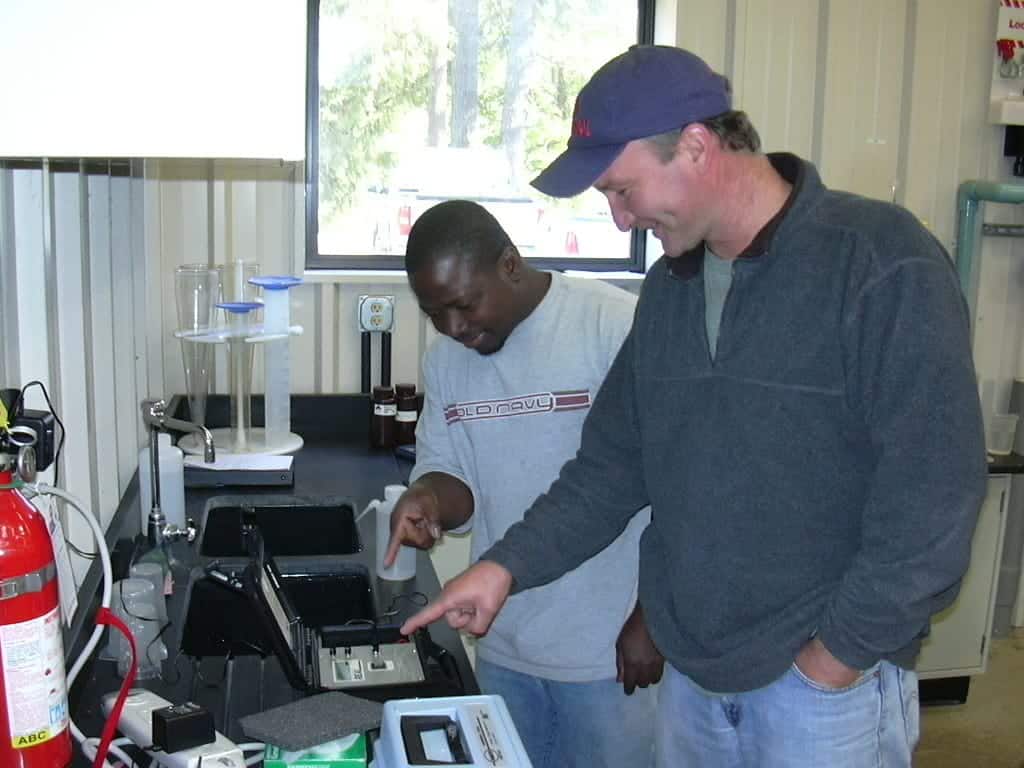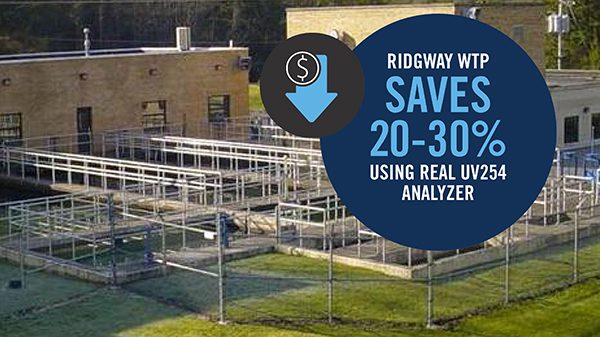PREPARING FUTURE WATER & WASTEWATER TREATMENT PLANT OPERATORS
Linn-Benton Community College in Oregon, USA is preparing students for careers as water or wastewater treatment plant operators with a variety of “hands-on” labs, such as jar testing, designed by program head Ron Sharman. The focus of the labs is to give students experience with a variety of operator tasks similar to those encountered daily by a treatment plant operator. Sharman has seen a lot of change in the water industry over his long tenure as a professor in this field. Although UV254 organic testing has long been a known alternative to the more traditional TOC organic analysis, there hasn’t been practical equipment available on the market until more recently, limiting the use of this water quality parameter.
That has all changed now, with both portable and real time UV254 analyzers readily available at affordable price points that are very easy to operate. This has
opened up the opportunity for Sharman to include more hands-on organic analysis training in his program which will benefit his students in the future as operators. The increasing role of UV254 testing is becoming even more apparent with tightening budgets and regulations to minimize the formation of disinfection by-products (DBPs). Another reason for the increasing role of UV254 is its bias towards detecting reactive organic matter, which is problematic for plants as it is the reactive organics that more readily consume coagulants and combine with chlorine to form DBPs.
OPTIMIZING COAGULATION TO REMOVAL ORGANICS EFFICIENTLY
 Monitoring UV254 is allowing plant operators to better control and optimize their treatment processes and produce improved water quality. Many plants just don’t have the capability to run TOC lab samples at a high frequency given the time and expense, nor do they have the available budget to purchase and maintain more costly online TOC analyzers. As a result, Sharman sees operators simply bypassing TOC analyzers and tracking UV254 in real-time for process control. As an addition to his infield labs, Sharman uses the Real UV254 P200 portable meter to help his students learn about coagulation optimization. By understanding the organic load of a specific water source, the students are able to determine the optimum coagulation dosage of alum.
Monitoring UV254 is allowing plant operators to better control and optimize their treatment processes and produce improved water quality. Many plants just don’t have the capability to run TOC lab samples at a high frequency given the time and expense, nor do they have the available budget to purchase and maintain more costly online TOC analyzers. As a result, Sharman sees operators simply bypassing TOC analyzers and tracking UV254 in real-time for process control. As an addition to his infield labs, Sharman uses the Real UV254 P200 portable meter to help his students learn about coagulation optimization. By understanding the organic load of a specific water source, the students are able to determine the optimum coagulation dosage of alum.
HANDS ON EXPERIENCE WITH UV254 AND JAR TESTING
 In October 2011, Sharman had his students participate in an infield lab, testing the water of the North Santiam River in Stayton, Oregon. The goal of the lab was to determine the optimum coagulation dosage for alum and possibly soda ash for this water source. The students conducted various jar tests with UV254 to determine which chemical combination would produce the best finished water quality results. Using the Real UV254 P200 portable meter, the students were able to measure the organics level both before and after the addition of chemicals to determine efficiency of various doses. As with many water sources, the North Santiam river’s water quality conditions can fluctuate, requiring changes in treatment decisions. After a heavy rainfall, the effects on organic matter on coagulant demand were very apparent and enabled the students to see the important of frequent or real-time data for optimizing the coagulant dose.
In October 2011, Sharman had his students participate in an infield lab, testing the water of the North Santiam River in Stayton, Oregon. The goal of the lab was to determine the optimum coagulation dosage for alum and possibly soda ash for this water source. The students conducted various jar tests with UV254 to determine which chemical combination would produce the best finished water quality results. Using the Real UV254 P200 portable meter, the students were able to measure the organics level both before and after the addition of chemicals to determine efficiency of various doses. As with many water sources, the North Santiam river’s water quality conditions can fluctuate, requiring changes in treatment decisions. After a heavy rainfall, the effects on organic matter on coagulant demand were very apparent and enabled the students to see the important of frequent or real-time data for optimizing the coagulant dose.
UV254 AND COLOUR
In addition to UV254 jar testing labs, the students undertake experiments to further understand the correlations that can be made between different parameters such as UV254 and TOC or COD, or UV254 and colour. Professor Sharman prepared colour samples in the lab and measured the apparent color units of each sample along with the UVA values. From this simple experiment the students were able to see the correlation between ACU and UV254. Essentially, UV254 will detect any organics detected by a colour instrument. However, UV254 has the added advantage that it is more sensitive to organics than color instruments. It is also able to detect organics that don’t have any color, such as pesticides, which could be in the water and would be missed by color instruments.
________________________________________________________________________________________________________________________
RELATED POSTS
HOW A SIMPLE ORGANICS MONITOR HELPED REDUCE CHEMICAL COSTS
ORGANICS AREN’T INVISIBLE: A GUIDE FOR SIMPLE ONLINE MONITORING
A GUIDE TO SOURCE WATER MONITORING
GO BACK TO BLOG
![]()



